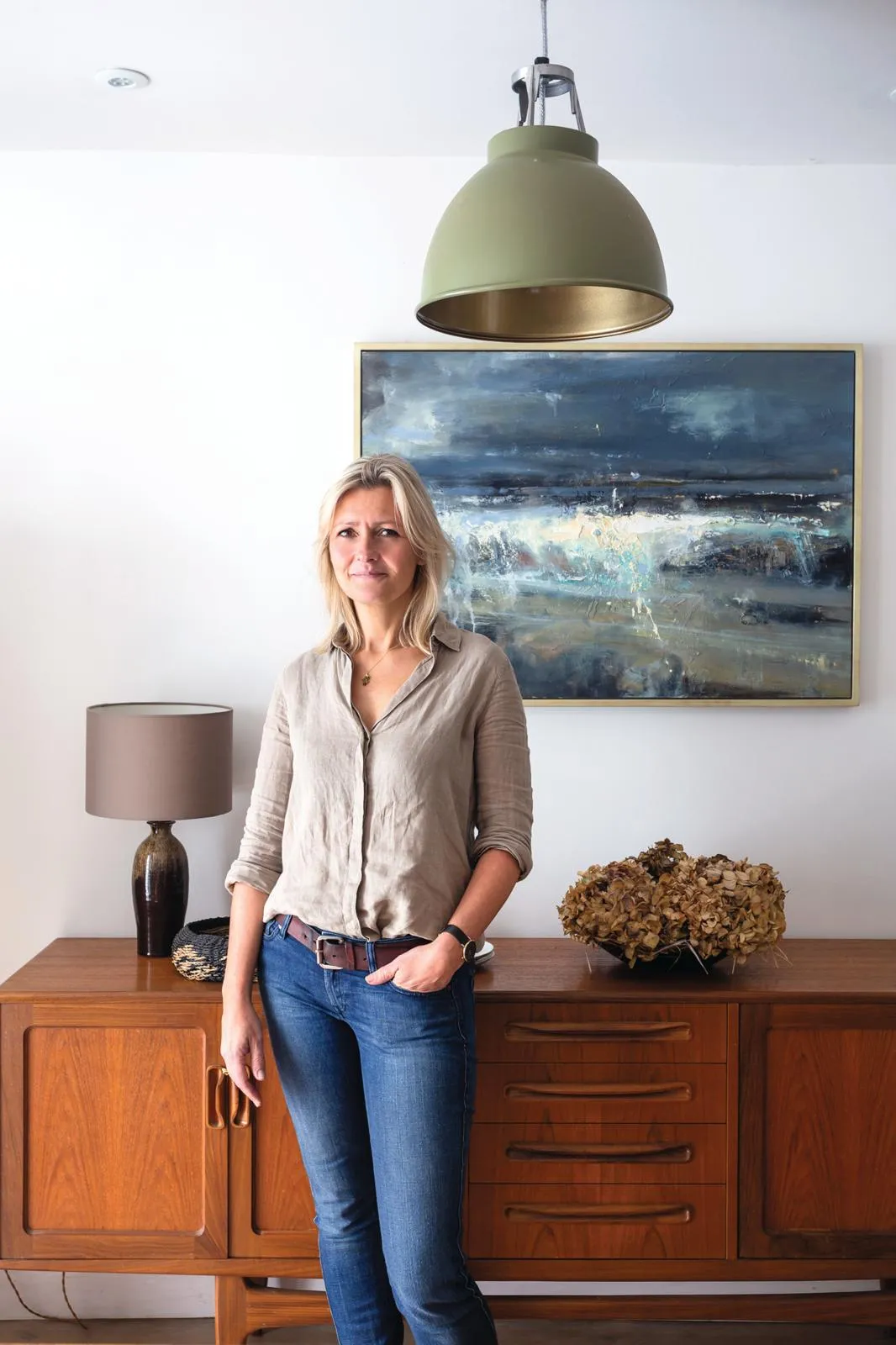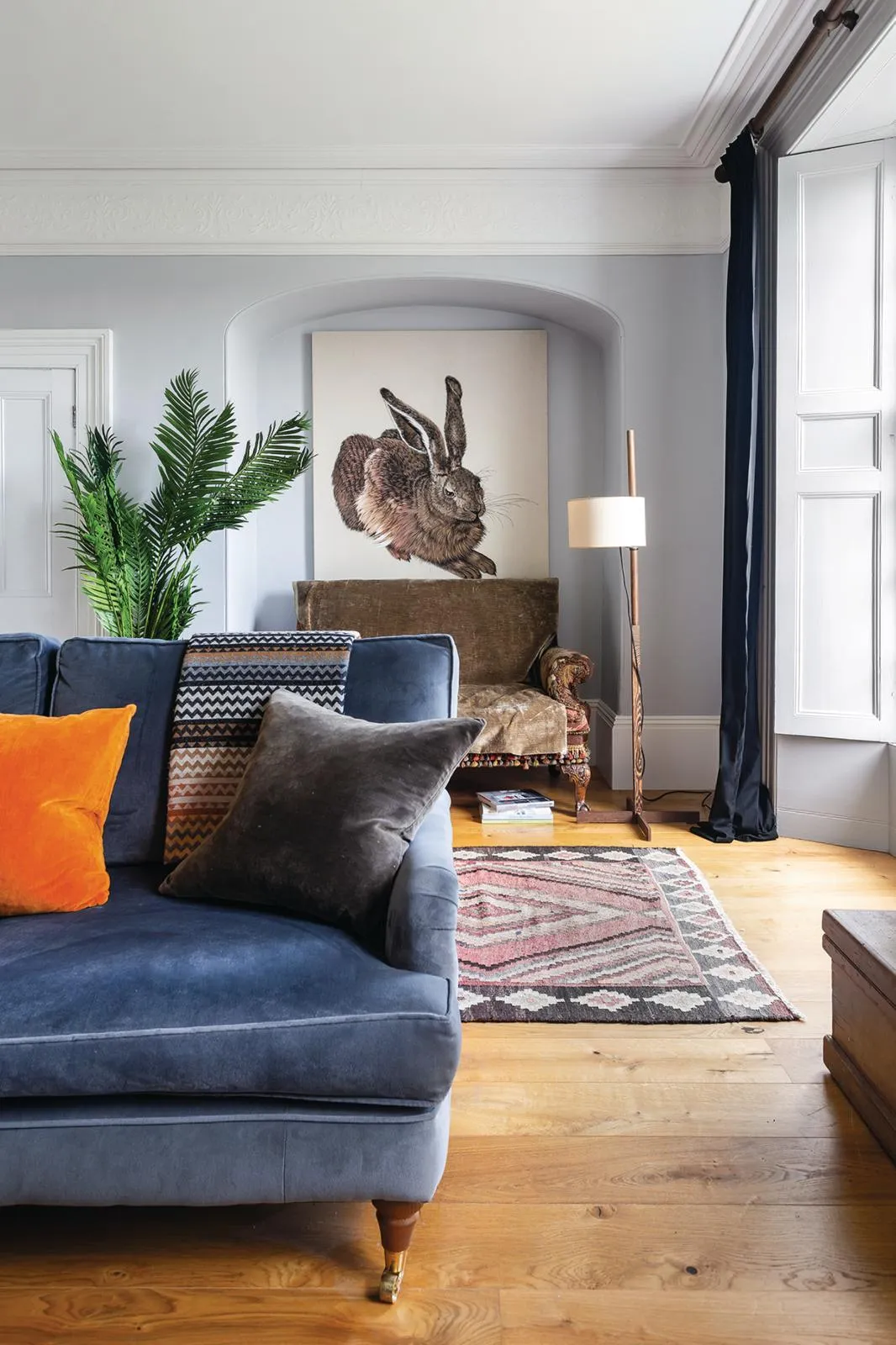High above the River Fal in Cornwall, the elegant sweep of a gracefully appointed terrace in Falmouth’s conservation area had long intrigued fine artist Hannah Woodman. A well-known architectural landmark, it was built between 1830 and 1850 for the sea merchants and captains who resided in the historic maritime town.
‘I’d driven by the terrace for years and was always reminded of the big Georgian house in Exeter I’d grown up in,’ says Hannah. ‘When I discovered that one of the houses here was for sale, I couldn’t wait to view it.’
The moment she walked into the hall, light streaming in through the huge fanlight above the door, she had no doubt that this was the family home she wanted for herself and her three daughters. ‘It was like coming home – I loved the generous proportions and sense of space and, of course, its position overlooking the river was amazing,’ she says.
Some original features were in situ, and the wide door and windows at the front were just as they’d always been. ‘Even now, I love looking through the panes of original glass that have a slight ripple, and imagine the people who lived here before me, gazing at the same view…’
You might also like a Victorian town house in Brighton
‘However, I was still well aware I’d be taking on a major renovation – decades of unsympathetic alterations had definitely taken their toll. The house had been through various guises: at one point it had even been converted into flats, and had also been tenanted by previous owners, so part of the upstairs had been made into a bedsit.’
After rigorous planning, work on the Grade II-listed property could begin. ‘The house had to work for the way we live today, but I wanted to update it without obliterating the past,’ says Hannah. ‘I worked with the original footprint too, rather than making any extensive changes.’ The renovation took six months, during which time Hannah researched everything, from fittings to finishes.
Once the bones had been made good, Hannah turned her attention to the decor. Much of the furniture had been bought over the years, or are heirlooms, while other pieces have been carefully sourced. ‘I thought a lot about what would work where, and what I really needed to invest in,’ she explains.
‘I always do my research and rarely buy on spec. In my twenties, I’d save up to buy Georgian furniture, like little tables, blanket boxes and chests, as they were more affordable at the time. I used to enjoy pottering around antiques shops like Topsham Quay Antiques Centre: I bought an oak chest there when I was 22, which sits at the bottom of my bed. I’d never be without it.’
You might also like inside a colourful Georgian townhouse
Along with classic Georgian pieces which, not unsurprisingly, are perfectly at home here, mid-century items and decorative objects from the 1960s and 70s have a strong presence. Here, again, Hannah’s childhood home proved a definitive influence.
‘My mum loved antiques – 18th and early 19th-century – while my dad was a huge fan of mid-century design. It resulted in a very eclectic mix of styles, though, at the time, it didn’t seem unusual at all,’ says Hannah. ‘I think there are real design parallels between both eras, which is why nothing seems to jar. Both have an underlying simplicity and symmetry, which is unfussy and clean.’
It’s not only the furniture that brings such a sense of individuality to Hannah’s home. As an artist, she is highly attuned to creativity in all its forms and, in every room, paintings, etchings, ceramics and sculptures are on display. ‘My parents really appreciated art and would often visit artists’ studios at the weekend: our family home was full of modernist paintings, ceramics and textiles,’ she says.
‘I inherited their enthusiasm for beautiful things, but it’s more than that. I love the idea of items being slowly collected and treasured over the years. It means a home is layered with pieces imbued with stories and memories. They really help to make a home, and that’s certainly been the case here.’














